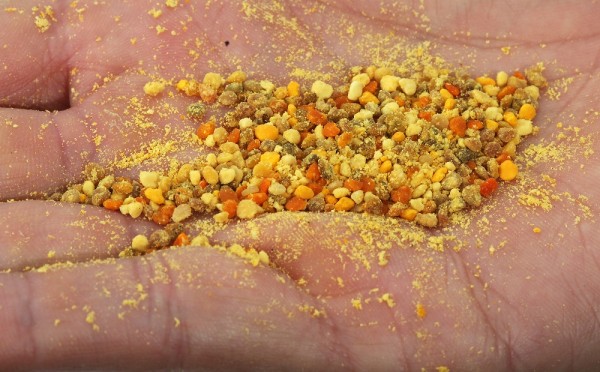Bees Are More Exposed to Harmful Pesticides From Pollen and Non-Crop Plants
| Ana Verayo | | Jun 01, 2016 03:15 AM EDT |
(Photo : Purdue Agriculture/Tom Campbell) Pollen balls made by Indiana honeybees. Variations in color reflect differences in flower species.
A new study reveals some alarming findings, how honeybees also transfer and absorb harmful pesticides during collecting pollen from plants even if they are not farm crops.
Like Us on Facebook
Bees that are living in agricultural regions regularly collect the majority of their pollen from non crop plants however, these insects can still experience the harmful effects of these pesticides that are used for commercial crops and otherwise.
Now, researchers from Purdue University in Indiana, have monitored and traced back pollen sources along with pesticide levels from honeybess for a period of 16 weeks. Scientists obtained samples from pollen inside their hives that where they foraged them from about 30 families of plants. Results revealed that samples apparently contained pesticide remnants that originate from nine different chemicals that also include neonicotinoids, which is a pesticide that causes colony collapse disorder.
According to entomology professor Christian Krupke from Purdue University, crop pollen was just a minor part of what these bees collected however, in this new study, it suggests that bees are far more exposed to a wider range of chemicals that first expected. The different kinds of pesticides found in our pollen samples were simply overwhelming.
Krupke adds that agricultural chemicals are not the main problem here, since some of the major sources of these chemicals are from communities and urban landscapes, even when these hives are far away from these crop fields.
Apart from harmful neonicotinoids, scientists also discovered a significant amount of pyrethoids, which is an insecticide that are commonly seen in homes to repel wasps, mosquitoes and other bugs that can become a nuisance.
More studies supporting this one now trace major threatening sources to honeybees, such as disease, pesticides and even habitat loss, which are the main reasons why honeybees are continuing to decline in population numbers.
This new study only confirms how pesticide exposure is even more widespread than ever before, where non crop plants are already suffering from dangerous pesticide exposure, and in turn, the insect world is also experiencing its adverse effects, making pesticides a major stressor for bees.
This new study is published in the journal, Nature Communications.
TagsBees, honeybees, pollen, bees pollen pesticides, pesticides, non crop plants pollen pesticides, insecticides
©2015 Chinatopix All rights reserved. Do not reproduce without permission
EDITOR'S PICKS
-

Did the Trump administration just announce plans for a trade war with ‘hostile’ China and Russia?
-

US Senate passes Taiwan travel bill slammed by China
-

As Yan Sihong’s family grieves, here are other Chinese students who went missing abroad. Some have never been found
-

Beijing blasts Western critics who ‘smear China’ with the term sharp power
-

China Envoy Seeks to Defuse Tensions With U.S. as a Trade War Brews
-

Singapore's Deputy PM Provides Bitcoin Vote of Confidence Amid China's Blanket Bans
-

China warns investors over risks in overseas virtual currency trading
-

Chinese government most trustworthy: survey
-

Kashima Antlers On Course For Back-To-Back Titles
MOST POPULAR
LATEST NEWS
Zhou Yongkang: China's Former Security Chief Sentenced to Life in Prison

China's former Chief of the Ministry of Public Security, Zhou Yongkang, has been given a life sentence after he was found guilty of abusing his office, bribery and deliberately ... Full Article
TRENDING STORY

China Pork Prices Expected to Stabilize As The Supplies Recover

Elephone P9000 Smartphone is now on Sale on Amazon India

There's a Big Chance Cliffhangers Won't Still Be Resolved When Grey's Anatomy Season 13 Returns

Supreme Court Ruled on Samsung vs Apple Dispute for Patent Infringement

Microsoft Surface Pro 5 Rumors and Release Date: What is the Latest?










